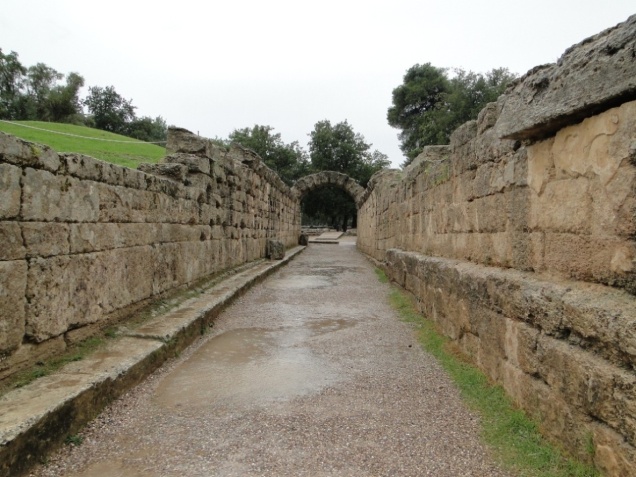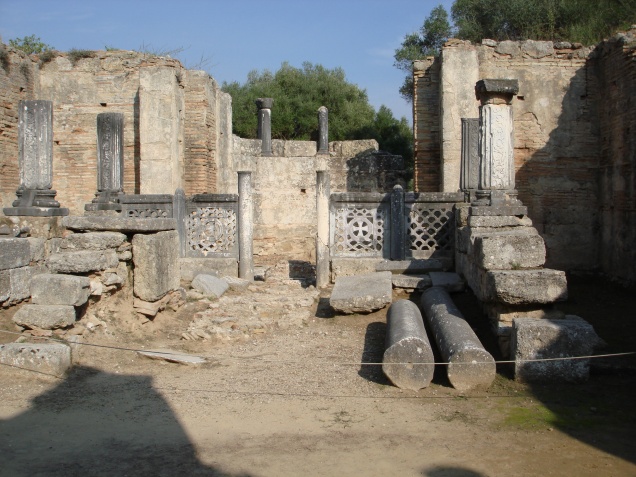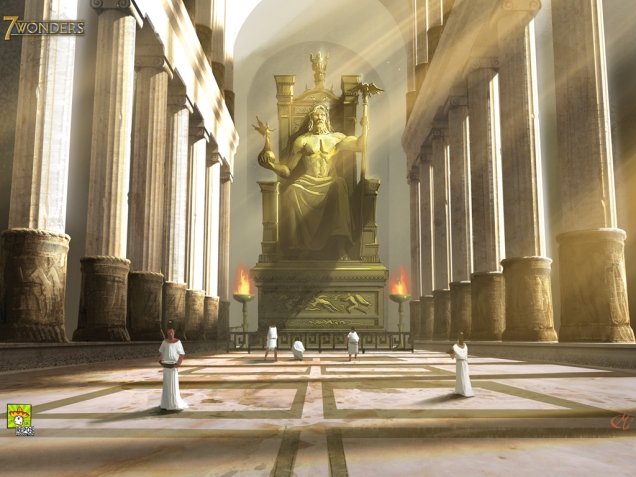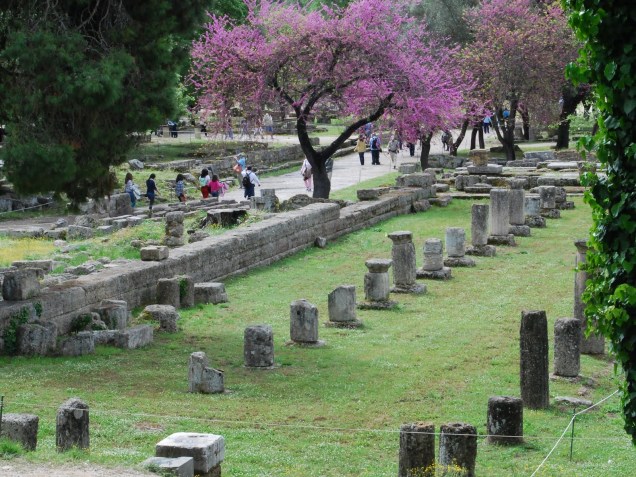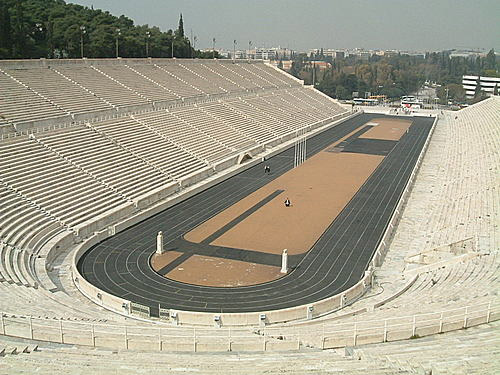Olympia was the site of the ancient Olympic Games, which were celebrated every four years by the Greeks. Olympia was in a valley in Elis, in western Peloponnesus, through which runs the Alpheus River. It was not a town, but only a sanctuary with buildings associated with games and the worship of the gods. Olympia was a national shrine of the Greeks and contained many treasures of Greek art, such as temples, monuments, altars, theaters, statues, and votive offerings of brass and marble. The Altis, or sacred precinct, enclosed a level space about 200 m long by nearly 177 m broad. In this were the chief centers of religious worship, the votive buildings, and buildings associated with the administration of the games.
The French began excavations here in 1829. German explorations of 1875-81 threw much light upon the plans of the buildings; they were resumed in 1936, 1952, and 1960-61. Many valuable objects were discovered, the most important of which was a statue of Hermes, the messenger of the gods, by Praxiteles.
The most celebrated temple was the Temple of Zeus, dedicated to the father of the gods. In this temple was a statue of Zeus made of ivory and gold, the masterpiece of the Athenian sculptor Phidias. Next to the Temple of Zeus ranked the Heraeum, dedicated to Hera, the wife of Zeus. In this temple stood the table on which were placed the garlands prepared for the victors in the games. Outside the Altis, to the east, were the Stadium and the Hippodrome, where the contests took place; on the west were the Palaestra, or wrestling school, and the Gymnasium, where all competitors were obliged to train for at least one month.
Many remains of the ancient site still exist at Olympia, including the stadium for foot races and the hippodrome for horse races. Other events included wrestling, boxing, javelin, discus, long jump and pentathlon.
Some events were held here in the 2004 Olympics, hosted by Athens. Medal winners at these games were crowned with wreaths of green leaves, following the practice of the ancient Games.
Ancient Olympic Games
According to historical records, the first ancient Olympic Games can be traced back to 776 BC. They were dedicated to the Olympian gods and were staged on the ancient plains of Olympia. They continued for nearly 12 centuries, until Emperor Theodosius decreed in 393 A.D. that all such “pagan cults” be banned.
The ancient Olympic Games were initially a one-day event until 684 BC, when they were extended to three days. In the 5th century B.C., the Games were extended again to cover five days.
The ancient Games included running, long jump, shot put, javelin, boxing, pankration and equestrian events.
The Olympic victor received his first awards immediately after the competition. Following the announcement of the winner’s name by the herald, a Hellanodikis (Greek judge) would place a palm branch in his hands, while the spectators cheered and threw flowers to him. Red ribbons were tied on his head and hands as a mark of victory.
The official award ceremony would take place on the last day of the Games, in front of the temple of Zeus. In a loud voice, the herald would announce the name of the Olympic winner, his father’s name, and his homeland. Then, the Hellanodikis placed the sacred olive tree wreath, or kotinos, on the winner’s head.
The oldest myth which concerns the beginning of the games was about how Zeus fought and defeated Cronus in a struggle for the throne of the gods. Finally, the well-known demigod Herakles is mentioned. He staged games in Olympia in honour of Zeus, because the latter had helped him conquer Elis when he went to war against Augeas.
Through the 12 centuries of the Olympic Games, many wonderful athletes competed in the stadium and the hippodrome of ancient Olympia’s sacred area. Although mortal, their Olympic victories immortalised them.
All free male Greek citizens were entitled to participate in the ancient Olympic Games, regardless of their social status.
Married women were not allowed to participate in, or to watch, the ancient Olympic Games. However, unmarried women could attend the competition, and the priestess of Demeter, goddess of fertility, was given a privileged position next to the Stadium altar.
Modern Olympic Games
Since the Games were not well publicized internationally, contestants were not nationally chosen but rather came individually and at their own expense. Some contestants were tourists who happened to be in the area during the Games. Athletes wore their athletic club uniform rather than a national team.
Pole vaulting, sprints, shot put, weight lifting, swimming, cycling, target shooting, tennis, marathon and gymnastics were all events at the first Olympics. The swimming events were held in the Bay of Zea in the Aegean Sea. Approximately 300 athletes participated, representing thirteen countries.
The Olympic Games
Olympic Games
http://en.wikipedia.org/wiki/Modern_Olympic_Games
Olympia Greece

This work by EnglishOŠAca is licensed under a Creative Commons Attribution-NonCommercial-NoDerivatives 4.0 International License.
